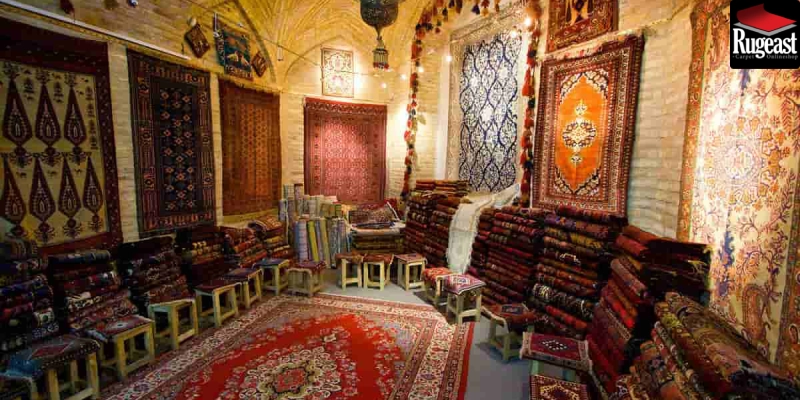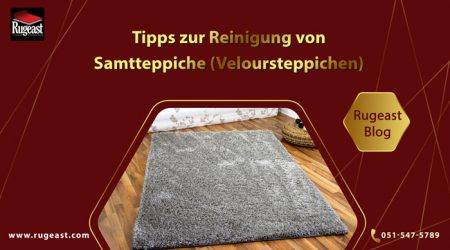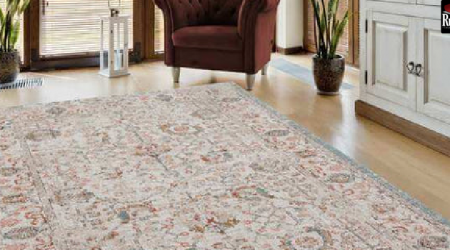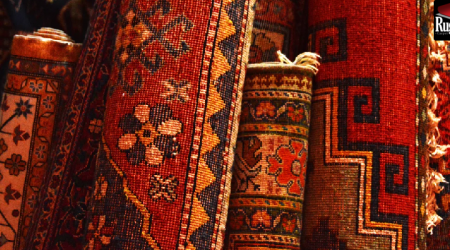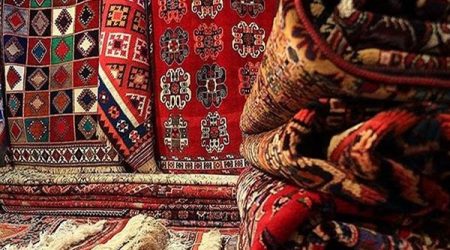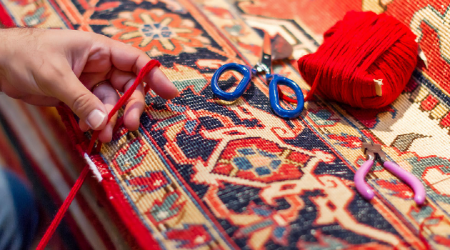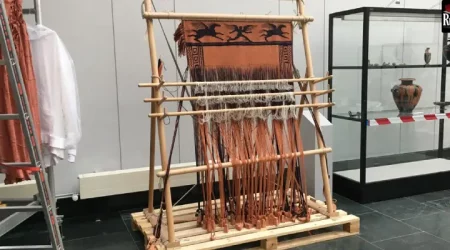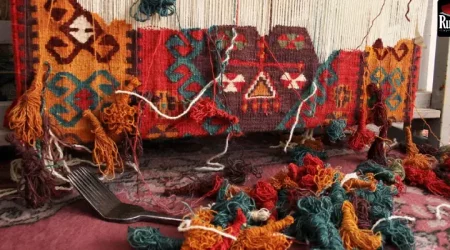The meaning of various colors in Persian and Oriental carpets
Color is one of the most important factors considered when choosing a carpet. The color of the carpet has an undeniable impact on the appearance and ambiance of the room, and the right color can breathe life into the space. Hand-woven carpets are produced in a remarkable variety of colors and patterns. The color of the carpet illuminates the entire room, so be sure to choose the carpet color carefully and intelligently. Moreover, each carpet color carries its own significance. Master dyers dye the wool before handing it over to carpet weavers. Before synthetic dyes were introduced, a wide range of eye-catching colors was extracted from mineral and plant materials to dye the wool. However, many authentic Iranian carpets are still woven from high-quality wool dyed with natural plant and mineral dyes. The root of madder provided a strong red dye in the red color family, making it a suitable and popular source for dyeing spun wool. Nomads, who are considered the creators of intricate Iranian carpet weaving techniques, used various sea creatures, insects, native plants, and imported materials to create captivating colors. Snails, beetles, various flowers and seeds, from madder to dried pomegranates and grapevine leaves, were used to create enchanting colors for highly patterned and ornate carpets.
*Read more: Click to read about the kid’s carpets and its selection criteria.
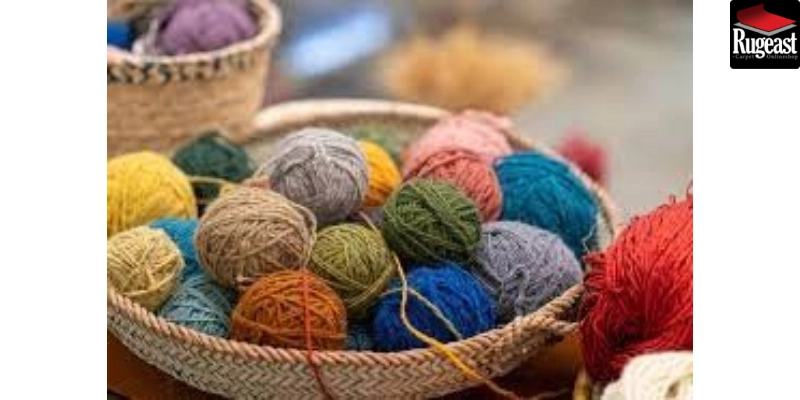
The colors of authentic Iranian carpets
colors not only impact the ambiance of the room but also influence the mood of the inhabitants. Therefore, when purchasing a carpet, pay attention to the atmosphere you want your room to have. Neutral tones, greens, and calming blues fill the home with tranquility and are suitable for bedrooms, workspaces, or cozy corners. Meanwhile, carpets with vibrant and bright colors invigorate living rooms and children’s playrooms. Iranian hand-woven carpets with enchanting and captivating colors enchant the taste of any beholder. Rich reds, walnut browns, earthy tones, and lapis lazuli blues are among the predominant colors in authentic Iranian carpets.
The colors of Iranian and Eastern hand-woven carpets
One of the most captivating aspects of Iranian carpets is the combination of warm and soulful colors. Most Iranian carpets are dyed using native plants that grow in the mountains and plains of Iran. The color palette and combination of colors in Iranian hand-woven carpets are one of the determining factors of their value. When choosing the colors for a carpet, one should pay attention to various factors, which will be discussed further.
The Suitable Combination of Carpet Colors
Each individual has their own preferred colors, and we do not intend to provide a definition for the concept of beauty here. However, different cultures tend to favor different colors. For example, most European customers seek carpets with lighter backgrounds, such as nain carpets or kashan carpets with subtle color schemes. On the other hand, carpets with bold red backgrounds like Kashan or tabriz carpets are still favored by countless enthusiasts in the East.

The dyes used to color wool or cotton
chemical dyes
Most inexpensive carpets are dyed with chemical materials because dyeing with chemical substances is faster and cheaper.
Plant-based dyes
Carpets dyed with plant-based materials are nowadays very rare and expensive, but if you’re lucky, you can find these beautiful carpets among Iranian rural or village carpets, or authentic city-woven carpets such as those from Isfahan. The art of dyeing has a history as old as human civilization. Humans have long used various materials to dye their homes and even their bodies. The table below is just a list of materials that have been used for centuries in Iran to dye wool and cotton.
Colors Used in the Art and Industry of Carpet Weaving in Iran
- Plant-based dyes:
- Wild Madder Root – Red
- Indigo Plant (Indigo) – Blue
- Turmeric, Mulberry – Green
- Oak Tree Bark – Black
- Tree Bark or Nuts – Brown
- Saffron, Pomegranate – Yellow
- Diluted Madder Root Dyes – Pink
- Tannin, Oak Bark, Iron – Brown
Of course, more colors are used in Iranian carpets and rugs.
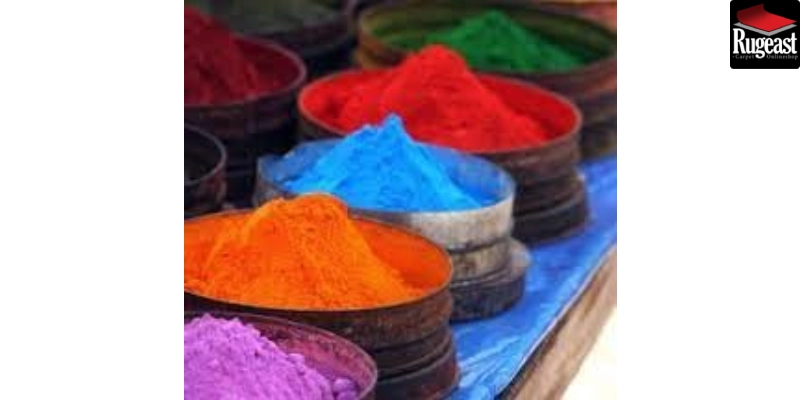
The Number of Colors Used in Iranian Carpets:
Many believe that the more colors used in a carpet, the more expensive it becomes. In some exquisite carpets woven by skilled carpet weavers and preserved in museums, close to 250 colors can be seen in a single carpet. Creating a carpet with such a complex color combination requires years of experience and knowledge.
Symbolic Meanings of Colors in Iranian Carpets
Behind each of the colors commonly used in Iranian and Eastern rugs, there lies a hidden meaning. The diversity of colors in carpets reflects the ideals, emotions, and characteristics of Iranians over time. Common motifs in Iranian carpet weaving art have roots in the history and myths of Iran, and these valuable sources still inspire designers to create carpet patterns.
– Red: Joy, pleasure, beauty, courage, luck, and fortune
– Green: Paradise, holiness, renewal, spring
– Brown: Fertility and productivity
– Yellow/Gold: Power and grandeur
– Blue: Reliability, trustworthiness, commitment
– Orange: Selflessness, elegance, humility
– White: Purity, cleanliness, peace, and tranquility
– Black: Mystery and serenity

